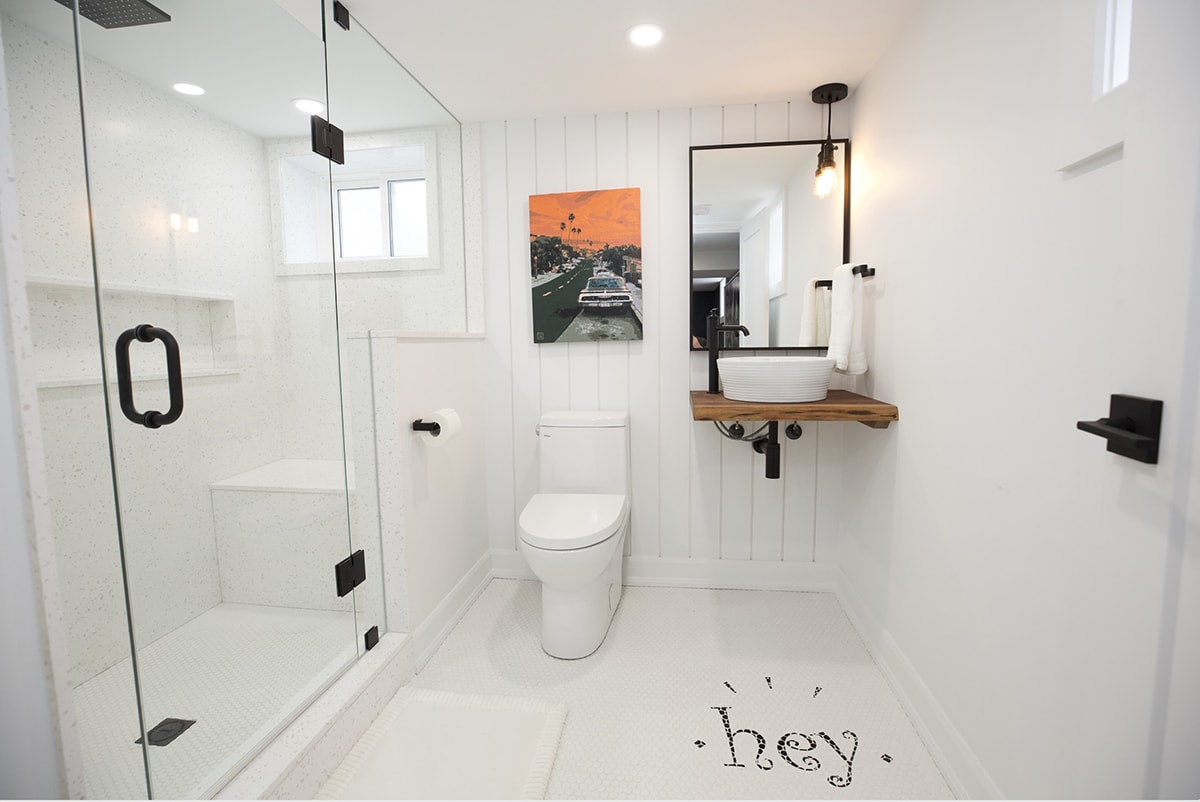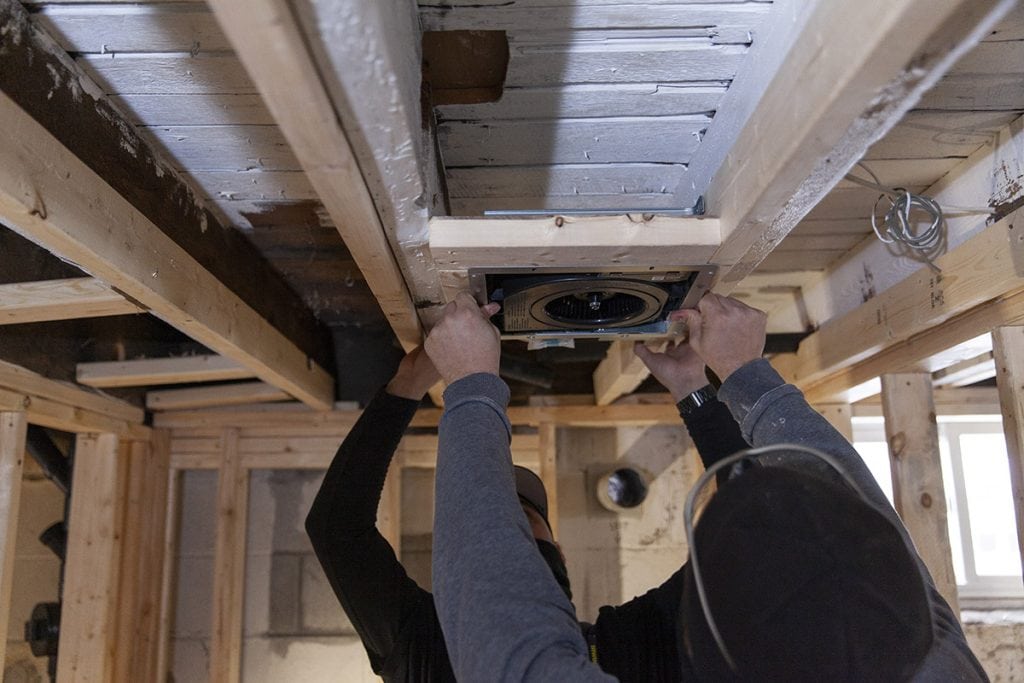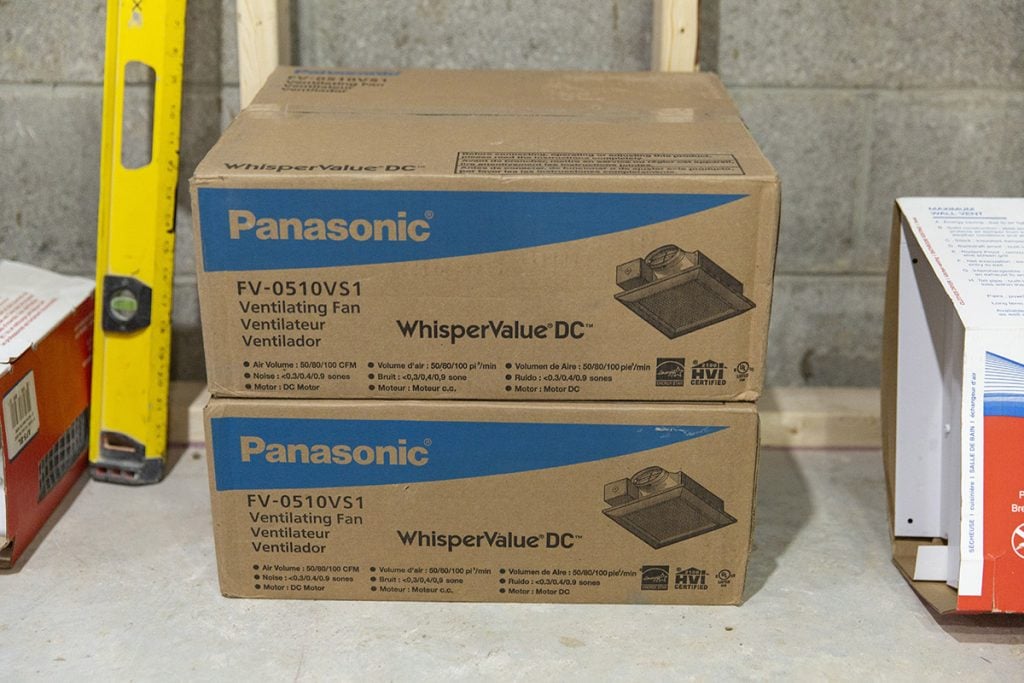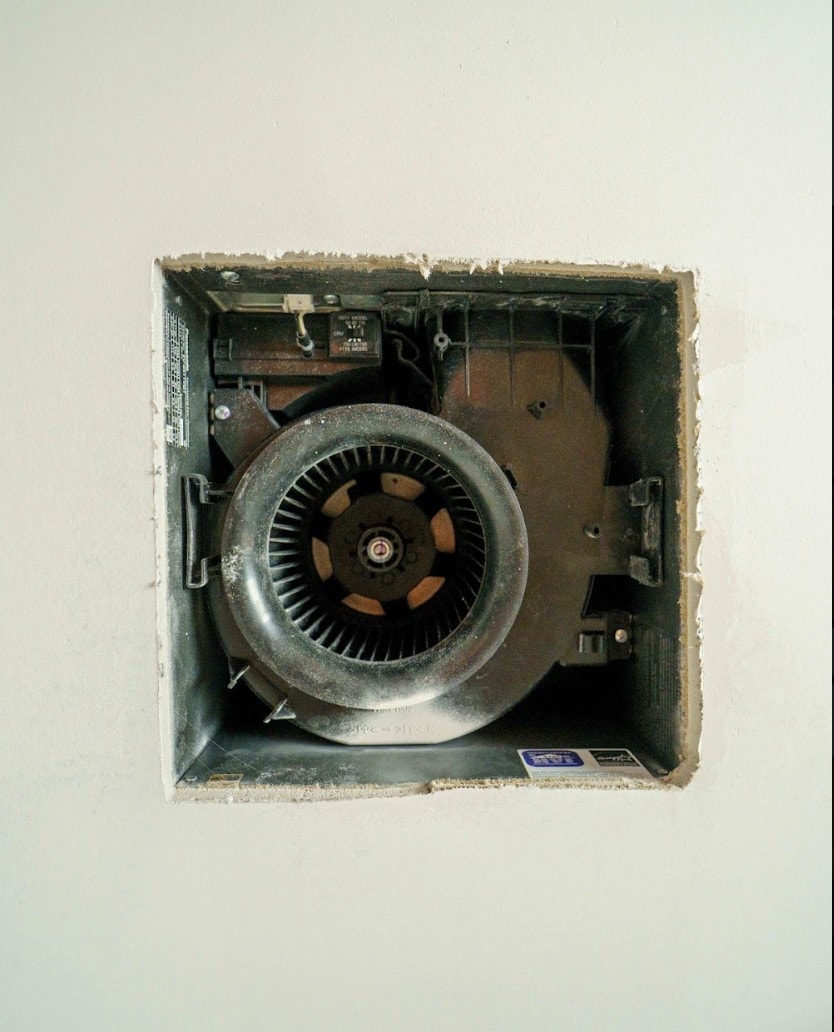Your gutters play a bigger role in protecting your home than most people realize. Be aware of these 9 signs your gutters were installed incorrectly. When they’re installed properly,...

How To Choose The Right Bathroom Exhaust Fan
By Mike Holmes
Mike’s Advice / Bathroom Renovation
Wednesday, October 5th, 2022 @ 2:18pm
Bathroom Exhaust Fan Buying Guide
Your indoor air quality plays an important role in how we feel every day. So how do you improve it? A big part of improving your indoor air quality is controlling moisture in your home. Installing a bathroom exhaust fan is a big part of that. I’m going to explain how to choose a vent fan for your bathroom.
The Importance of Bathroom Ventilation
Bathroom fans aren’t just for removing odors. You can actually have serious issues from poor bathroom ventilation. This is especially important in a bathroom that does not have a window. Poor ventilation in a bathroom can lead to mold and bad indoor air quality.
The best bathroom exhaust fan will get rid of excess moisture properly. This means protecting your bathroom against water damage.
Some symptoms of poor indoor quality that you may notice are:
- frequent headaches
- Dryness and irritation in the eyes, nose, throat, and skin.
- Fatigue
- Shortness of breath.
- Hypersensitivity and worsening allergies
- Sinus congestion
- Coughing and sneezing.
- Dizziness

Subtle matte black accents create a simple, modern feel to the bathroom in Holmes Family Rescue.
RELATED
Indoor air quality and ventilation in your kitchen and bathroom
How to Choose the Right Size Bathroom Exhaust Fan
There are a lot of options available with different installation styles, capacities, and noise levels when it comes to choosing your bathroom vent fan. You first need to decide on the type of bathroom fan you want to install.
Types of Bathroom Vent Fans
You will probably come across one of three styles:
- Ceiling-mounted,
- Wall-mounted,
- or Inline/remote.
Ceiling-mounted bathroom vent fans

Ceiling mounted Panasonic ventilation fan installed in bathroom.
Ceiling-mounted fans are installed on the ceiling. These are the ones we install on our projects and they make the most sense. Think about it. Warm, moist air rises so it makes sense to have a bathroom vent fan on the ceiling.
Ceiling insert fans pull the warm and humid air out of the bathroom along a duct and vent it through the roof. In some cases, it can be vented out the wall outside.
Wall-mounted bathroom fans
These are mounted on the external wall of the house and generally are used when there is no practical way to vent through the roof; for example, in a first-floor bathroom.
Inline fans (also known as remote fans)
These have a fan unit located in a remote location such as the attic. Ductwork connects the fan to an opening in the bathroom ceiling covered by a grill. They are often installed when a homeowner wants to use one fan to vent multiple bathrooms, or to have multiple vents in one large bathroom.
The Best Bathroom Fans
For years I have been installing Panasonic ventilation fans on my projects. They are built right with high-performing motors. And you can expect a long life from your Panasonic ventilation fan.
If you have watched my shows, you know I HATE loud bathroom fans. The Panasonic fans are made to run quieter and are simple to install. I also like the speed-adjusting technology, you can change from 50, 80, and 110 CFM.
Here are the best options for bathroom fans from Panasonic:
- WhisperGreen Select™
- WhisperCeiling® DC™
- WhisperChoice™ (This fan is available as a retail exclusive.)
By the way, the noise level for these Whisper Series fans is <0.3 sones —it’s super quiet you won’t even notice it’s there.

We’ve been installing Panasonic bathroom ventilation fans on our job sites for a long time.
What To Look For In A Bathroom Fan
There are a lot of choices on the market when it comes to bathroom fans. Here are some things to consider:
#1 Noise Level
Bathroom fan sound levels are measured in sones. To put this into context, 4.0 sones is the sound of a standard TV. 3.0 sones is your typical office noise and 1.0 sones is the sound of a refrigerator.
For quiet bathroom ventilation, the fan should be rated at 1.0 sones or less. The sone rating is an important factor.
#2 Air flow capacity and Choosing the CFM
A fan’s ability to move air is measured in cubic feet per minute (CFM). The CFM rating you need is based on the size of your bathroom. A fan should have a CFM rating high enough to replace the air in your bathroom at a rate of eight times per hour. Your fan should have 1 cfm for every square foot of floor space in your bathroom.
Some vent fan models let you choose the CFM. This means you have the ability to select your required airflow (50, 80, or 110 CFM) with the simple flip of a switch.
I like this because one fan can work for a range of ventilation needs.

Bathroom ventilation fan installed on site.
Is higher CFM better for a bathroom fan?
How many fixtures do you have in the bathroom? Do you have a jetted tub? A shower? All these are a factor in choosing your vent fan. If it’s just a small bathroom with a toilet and a shower, you may only need a 100 CFM fan. If you have a jetted tub and shower, you will likely need a 200 CFM fan.
Most 50 CFM fans will run well with a 4” round duct. If you need a higher CFM, keep in mind you may need to increase the duct size to 6”. If you force too much air through a small (undersized) duct, your fan will be working too hard and not providing sufficient venting.
#3 Energy Efficiency
I recommend looking for a bathroom fan that is energy-star certified. Energy Star-rated bathroom fans use about 20% less energy than minimum federal guidelines.
It is also a good idea to look for a bathroom fan that has a timer and humidity sensor. That will cause your bathroom fan to only turn on when the room is humid. I like that because I always recommend running your fan for 30 minutes AFTER a shower.
#4 Features In A Bathroom Fan
I personally like bathroom ventilation fans with a night light. This WhisperFit DC Fan from Panasonic has a lighted model with one 10W dimmable LED chip panel. You can also find bathroom fans with Bluetooth speakers, motion sensors, heat lamps, and ceiling lights.
This is what I need you to keep in mind though. A vent fan with a bunch of accessories may actually need its own dedicated circuit. If it’s just a simple vent fan, most likely your local electrical code will allow it to be powered by the same general lighting circuit that powers your lighting fixtures.
RELATED
Installing a Bathroom Vent Fan
I don’t recommend installing a bathroom fan yourself. It is NOT a DIY project. This involves cutting a hole in your roof and electrical work. If this is a new installation, you may have to run electrical wiring and ductwork in your attic.
Here are the basic steps for installing a bathroom fan:
- Cutting the hole in your drywall based on the size of the fan
- Attaching the fan enclosure to the joist with screws
- Cutting a hole in the roof (this also requires removing shingles)
- Installing a roof vent
- Connecting and wiring the fan
- Wiring the switch
Replacing a vent fan?
If you are replacing an existing fan, you need to make sure your existing wiring can handle the additional load. A licensed electrical contractor can guide you. Never vent to an attic or subfloor as moist air creates an environment for mold and mildew growth.
I always say this about home improvement projects, make sure to check on your local building codes before you start work. Your installation must be in full compliance with local regulations.
RESOURCE:
To find a licensed electrical contractor near you visit: myhome.eaton.com or if you are in Ontario, Canada visit findacontractor.esasafe.com
Do I need a bathroom ventilation fan if I have a window?
I always recommend installing a bathroom ventilation fan, even if you have a window.
In some areas, exhaust fans are required by building codes, especially if there’s no window.
Do Bathroom Exhaust Fans Need To Vent Outside?
Your bathroom exhaust fan should be connected to vent ducts that push the exhaust outside your home. This is required by most building codes.
Think about the damage moist air can cause in your home. If not vented properly, this humid air can get to the space between ceiling joists, and cause damage. Venting into an attic (which I have seen A LOT of) simply dumps excess moisture into a closed space. You are looking at mold growing and damaging your floors, walls, and building materials. And mold can cause serious harm to your health as well.
READ NEXT
House Too Humid? Here’s What To Do.
How To Prevent Mold Growth In Your House
Lighting Ideas For Your Bathroom








